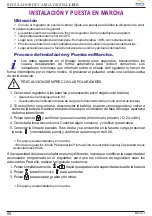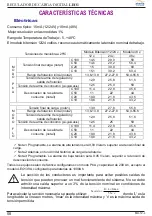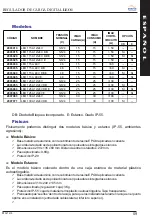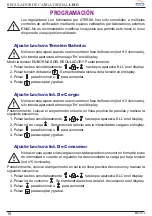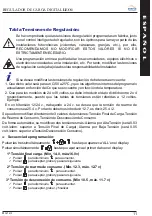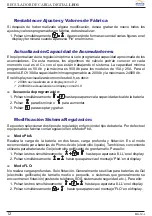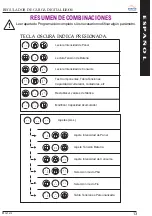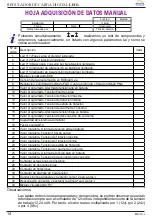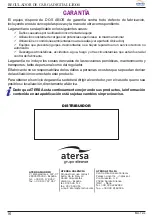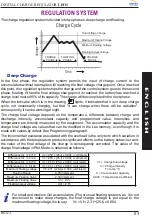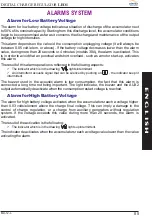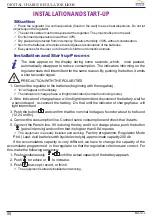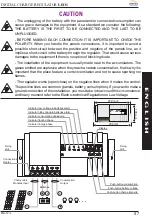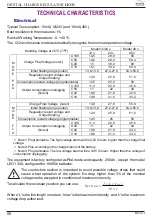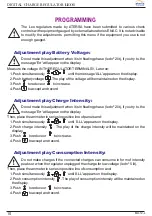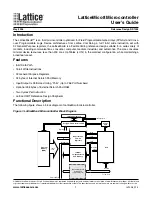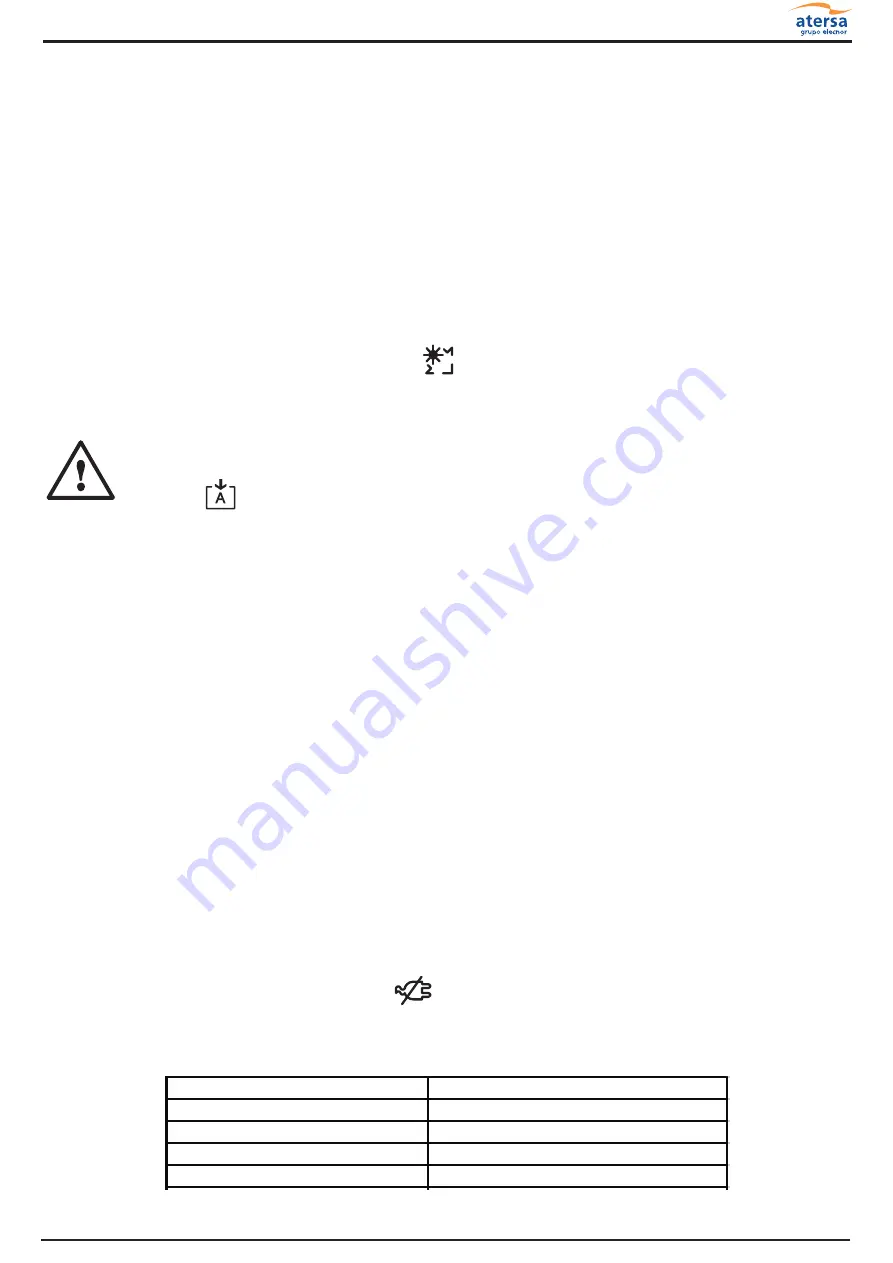
Final Charge and Floating
Consumption unplugging for battery low voltage
The final charge of the accumulator is made by the establishment of an operation area of the
regulation system within what is called the "Dynamic Floating Band". The DFB is a voltage
rank which minimum and maximum values are fixed between the charge final voltage and
the nominal voltage plus approxi 10%. The calculation of those values depends on
the charge state reached in the accumulator in the previous days (Historic): the rank of the
floating band DFB is higher when the state charge is less reached in the previous days.
This answer to the regulator permits to make automatically charges of equalisation of the
accumulators for a period in which the charge state was low, and on the contrary reducing
this way at maximum the gazing. When the accumulators voltage decreases until the output
floating level, the system goes again to the deep charge phase.
When the indicator which is in the drawing
lights up, it indicates that it is in the phase of
final charge and floating.
During the floating phase, the current entering in the batteries is pulsating. In a
piece of time, when the driving relay between all the intensity in the panels reaches
the maximum floating voltage, it stops driving, consequently, if being floating we
push on
(panel intensity), we can see '00.0' Amperes on the display or the
maximum intensity of the panels for this radiation.
For the precise calculation of the consumption unplugging voltage, it is necessary to know
the difference between charge and discharge intensity, capacity of the accumulator and the
programmed value. The intensities are data that the equipment directly measures, the
capacity of the installed accumulator and the programmed value are data that can be
modified on the Leo memory, even though it is made with values per defect. See
Programming paragraph.
If the battery voltage decreases lower than the value of handling unplugging consumption
voltage for more than 20 seconds or 4 minutes (models 30A), the consumption is
unplugged. This is done to avoid that a punctual and short overload deactivates the
consumption.
The result of the unplugging is recognised by the following aspects:
The consumption will be re-connected when the consumption restart voltage will be reached
and at the same time, the indicator will be deactivated. Independently from the mode (PbA o
FLO), the values are:
ü
ü
The supply in current is stopped through the output consumption.
The indicator which is in the drawing
lights up intermittent.
The unplugging of the consumption output for battery low voltage indicates a situation of
discharge of the accumulator next to 70% of its nominal capacity.
A
Difference Int. => C/10
Vdcm = 1.80 (vo lt./elem )
Difference Int. => C/20
Vdcm = 1.81 (vo lt./elem )
Difference Int. => C/50
Vdcm = 1.83 (vo lt./elem )
Difference Int. => C/100
Vdcm = 1.90 (vo lt./elem )
Co nsum ptio n restart vo ltage
Vrdcm = 2.08 (vo lt./elem )
DIGITAL CHARGE REGULATOR
LEO1
04
MU-12-L

